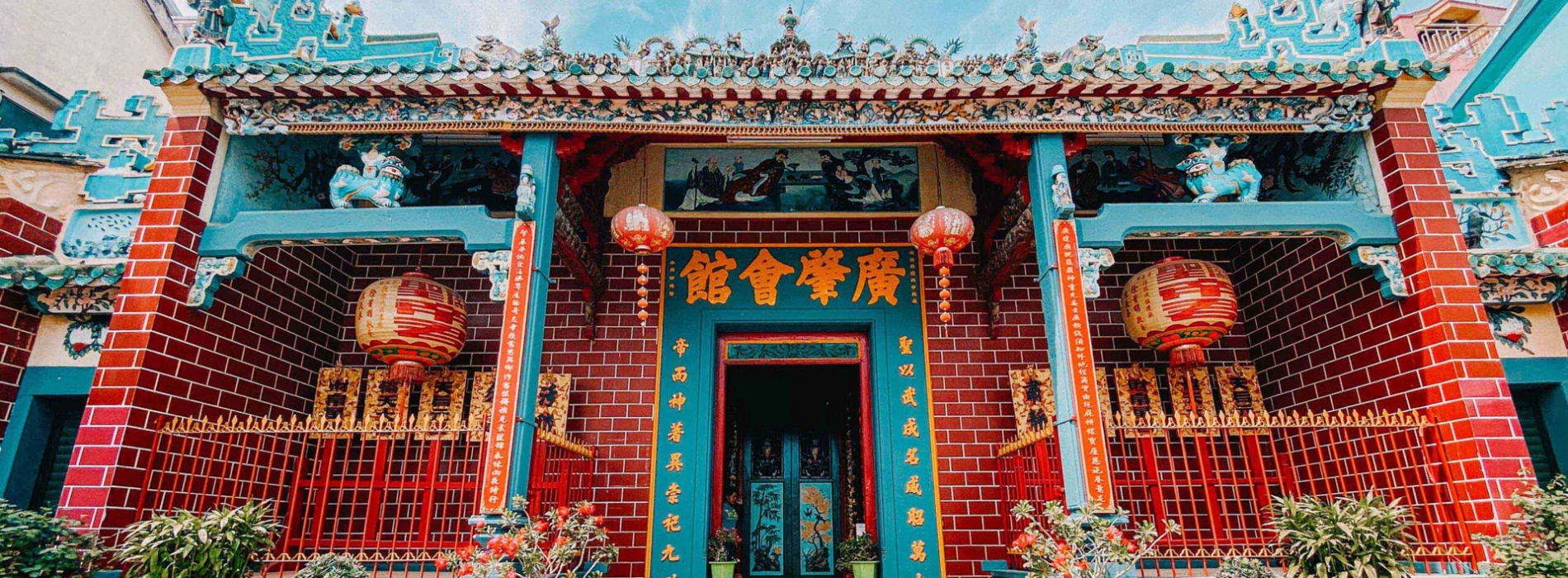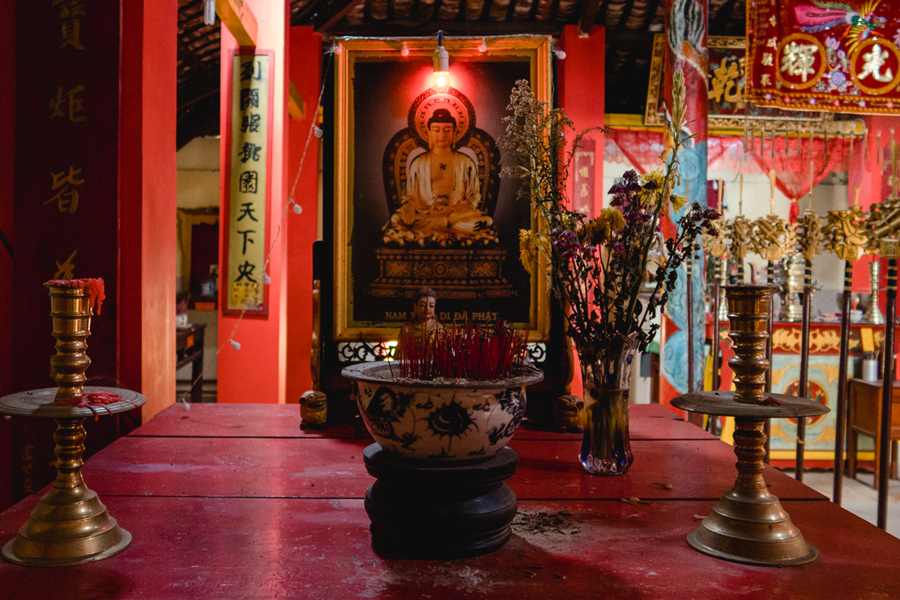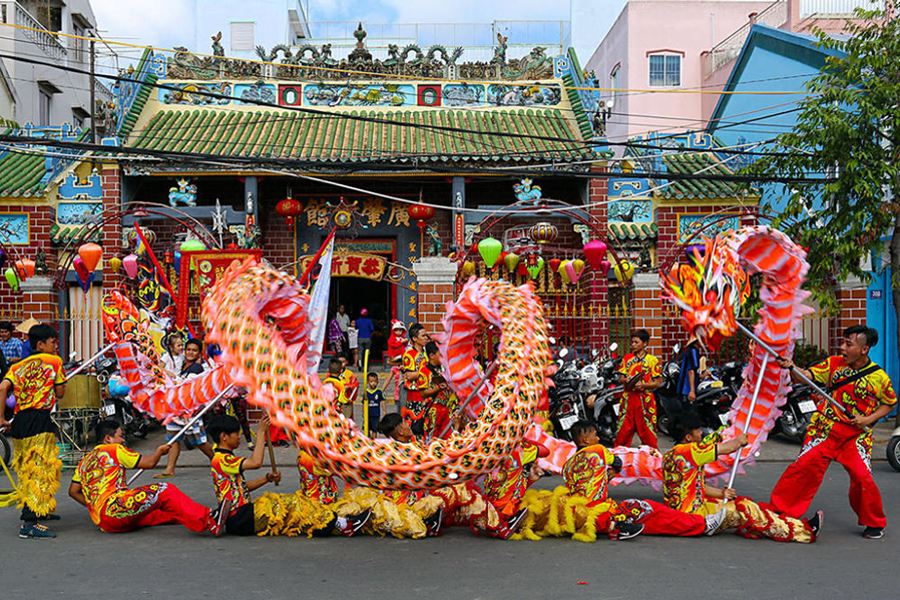Ong Pagoda

Ong Pagoda is a venerable Chinese-style temple with a history dating back to the 19th century. Constructed by Guangdong immigrants seeking a new life in the Mekong Delta, the pagoda stands as a testament to the cultural tapestry woven by the Chinese-Vietnamese community. Adorned with intricate wood carvings, colorful tiles, and sculptures, the architectural style reflects a harmonious blend of Chinese and Vietnamese influences. Dedicated to Quan Cong, a revered Chinese general, and other deities associated with prosperity, the pagoda is not merely a religious site but a cultural hub fostering community spirit. Throughout the year, Ong Pagoda hosts vibrant festivals, processions, and ceremonies that attract both worshippers and tourists. Visitors are welcomed to explore the temple grounds, immerse themselves in the rich cultural heritage, and witness the dynamic intersection of Chinese and Vietnamese traditions. Ong Pagoda stands as a symbol of unity, diversity, and the enduring connection between spirituality and culture in the heart of Can Tho.
Ong Pagoda, also known as Quang Trieu Hoi Quan, has a history deeply rooted in the Chinese immigrant community of Can Tho, Vietnam. The pagoda was established in the 19th century by immigrants from Guangdong, China, who sought new opportunities in the Mekong Delta region.
Ong Pagoda was built as a place of worship and communal gathering for the Chinese community in Can Tho. The construction of the pagoda was a reflection of their desire to maintain their cultural and religious practices in a new land. The pagoda became a center for spiritual activities, festivals, and social events, fostering a sense of community among the Chinese-Vietnamese residents.
Over the years, Ong Pagoda has weathered the changes of time and witnessed the evolving dynamics of the local community. It has stood as a symbol of cultural preservation and continuity, showcasing a unique blend of Chinese and Vietnamese architectural and religious influences.
The pagoda's dedication to Quan Cong, a revered Chinese general associated with loyalty, justice, and prosperity, underscores its spiritual significance. Ong Pagoda continues to be a place of reverence, cultural celebration, and community cohesion, contributing to the rich tapestry of Can Tho's cultural heritage. Today, it stands as a living testament to the historical and cultural connections between the Chinese immigrant community and the vibrant landscape of the Mekong Delta.
Ong Pagoda (Can Tho) opening hours are from 7:00 am to 6:00 pm.
Who does Ong Pagoda worship?
First Hall

Bodhisattva Avalokiteśvara altar
On the left: Worshiping General Ma Tien and his red-blooded horse;
Main hall
.jpg)
The main hall of Ong Pagoda
In addition, the pagoda also has a space to worship Bodhisattva Avalokiteshvara.
Ong Pagoda in Can Tho is known for its rich cultural and historical significance
Architectural Beauty

The temple's unique, Chinese-style architecture
Ong Pagoda showcases traditional Chinese architecture with intricate wood carvings, colorful tiles, and detailed sculptures. The architectural details, including the decorative elements on the pagoda's exterior and interior, are a highlight for visitors interested in craftsmanship and design.
Altar Dedicated to Quan Cong

The altar is a sacred space where worshippers pay homage to Quan Cong
One of the key attractions within the pagoda is the altar dedicated to Quan Cong, a revered Chinese general known for loyalty and justice. The altar is adorned with statues, symbols, and offerings, providing insight into the religious practices of the temple.
Participate in Ong Pagoda festival

Many special programs take place during the festival season
The Ong Pagoda Festival, also known as the Lantern Festival in Can Tho, occurs once every decade. During this event, attendees have the opportunity to engage in a lantern auction, where the belief holds that possessing a lantern brings significant fortune. Additionally, the festival features captivating activities, including martial arts competitions, lion and dragon dances, as well as performances by the Quang Trieu theater art.
Getting tattoos and praying for peace

People lined up to get tattoos at Ong Pagoda
Participating in the art of tattooing is a compelling and engaging activity at Ong Pagoda. By choosing tattoo hexagrams, individuals can seek answers to questions concerning destiny, love, or the paths of their children. In addition to the tattoo experience, visitors have the option to explore the temple's surroundings, taking in the sights and engaging in prayer for various aspects of life.
Ticket price to visit Ong Pagoda Can Tho Ong Pagoda Can Tho is open for free, welcoming visitors to visit and admire the beauty of an architectural feature bearing the imprint of the Chinese people.
If you are coming from outside Can Tho, the first step is to reach the city. You can do this by bus, car, or boat, depending on your starting point.
To reach the pagoda at Ninh Kieu Wharf, travelers can follow this route: Start from the central area of Can Tho and proceed along road 3A towards Vo Van Kiet. Continue straight on Mau Than Street, heading to Ninh Kieu. Subsequently, follow Nguyen Viet Hong Street, proceed to Hoa Binh Avenue in An Lac, and take a left turn after passing Kinh Do Moon Cake Shop (Can Tho). Navigate towards Hai Ba Trung Street in Tan An. Keep going until you spot the temple, and then it's time to make a stop.